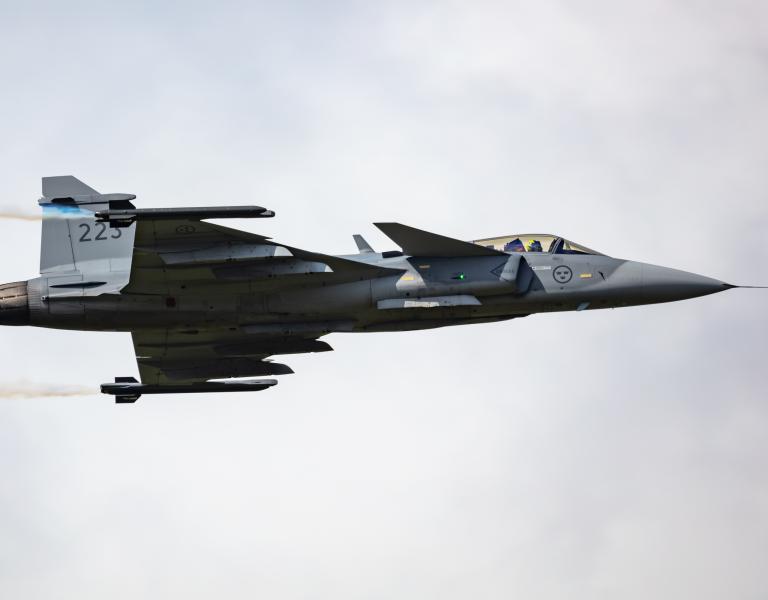
Decision Support in Early Phases: Driving Smarter System Procurement
Making the right decisions in the early phases of a defense program is one of the most significant challenges for both owner/operators and manufacturers. It is in these early stages that choices about product lifecycle management, supportability, and cost-efficiency must be made, often with limited data. These early decisions have long-term implications, shaping everything from operational readiness to sustainment costs over decades.
For decision-makers, the ability to predict the impact of different strategies is critical, yet traditional approaches often fail to provide the quantitative insights necessary for informed trade-offs. This is where integrated logistics support platforms like Systecon’s Opus Suite play a pivotal role. By applying analytical models early in the procurement process, stakeholders can ensure that performance, cost, and logistics requirements are optimized from day one rather than being adjusted reactively once the system is in service.
The Challenge of Early-Phase Decision-Making
The early phases of a defense procurement program are characterized by uncertainty. While operational needs are typically well understood, driven by the capability gaps that led to the acquisition effort, the details of how a system will be supported are often vague. Furthermore, the technical solution itself may still be in development, with multiple design options under consideration.
This lack of concrete data is a challenge because the majority of a system’s lifecycle costs are determined by early-phase decisions. Once a platform reaches the production stage, changing key design parameters or logistics structures becomes far more expensive and complex. While later optimizations can improve cost-efficiency, the greatest opportunity to influence affordability and operational effectiveness lies in the early phase.
Bridging the Gap with Analytical Models
A key takeaway from decades of defense procurement experience is that structured analytical approaches lead to better decisions. Organizations that rely purely on experience, intuition, or static spreadsheet models often find themselves facing unexpected cost overruns, availability shortfalls, or sustainment inefficiencies.
This is where Opus Suite provides an advantage. By developing a data-driven model of the system and its operational environment, decision-makers can simulate different design, sustainment, and maintenance strategies, even before detailed technical specifications are finalized
For example, consider an air force looking to procure a new fighter jet. Before committing to a particular design or support structure, planners must evaluate factors such as:
- How many aircraft are needed to sustain mission requirements?
- What level of maintenance infrastructure is required at different bases?
- How will component failure rates impact operational availability?
- What is the trade-off between higher upfront acquisition costs and lower sustainment costs over time?
By using software like Opus Suite, analysts can model failure behaviors, logistics chains, and maintenance schedules to determine which combinations of design and support solutions provide the optimal balance between cost and availability.
The Role of Integrated Product Support in Early Phases
A common pitfall in defense procurement is treating sustainment as an afterthought. Too often, programs focus heavily on selecting a platform based on performance metrics alone, only to realize later that sustainment costs far exceed initial estimates. Integrated Product support (IPS) is the discipline that prevents this misalignment by ensuring that supportability considerations are built into the design from the outset.
IPS frameworks, such as those defined in the ASD S-Series standards, provide a structured methodology for conducting Logistics Support Analysis (LSA). These analyses ensure that decisions about spare parts provisioning, maintenance intervals, repair facility locations, and personnel training are aligned with operational needs.
Opus Suite seamlessly integrates with IPS methodologies by providing a quantifiable, scenario-driven approach to logistics planning. For instance, when defining a maintenance concept for a naval fleet, Opus Suite can help answer
- Should maintenance be centralized at key naval bases, or distributed across multiple locations?
- What are the cost implications of different repair vs. replace strategies for critical subsystems?
- How do different logistics concepts impact fleet availability in various deployment scenarios?
By incorporating these factors into early-phase planning, decision-makers can avoid costly sustainment issues down the line, ensuring that their chosen logistics structure is both financially viable and operationally effective.
Case Study: Driving Down Lifecycle Costs Through Early-Phase Analysis
One of the best examples of early-phase decision support delivering tangible benefits comes from the development of the Gripen fighter jet. The Swedish Air Force placed strong emphasis on making the aircraft not only a high-performance combat platform but also an affordable, easy-to-maintain system. The sustainment philosophy prioritized rapid turnarounds, minimizing reliance on depot-level maintenance, and ensuring that the aircraft could be operated from challenging environments.
By applying a Life Cycle Cost-driven approach early in the program, the Gripen development team was able to optimize maintenance procedures, reduce reliance on specialized support infrastructure, and ultimately achieve one of the lowest cost-per-flight-hour metrics among modern fighters.
This success story illustrates a key lesson: proactive sustainment planning in early phases directly translates to long-term cost savings and operational flexibility. The same principle applies across all domains; land, sea, air, and space. Programs that embed logistics and sustainment considerations into design decisions achieve significantly better cost and performance outcomes than those that treat supportability as a secondary concern.
Summary
The early phases of a defense program present both the greatest challenges and the greatest opportunities. Decisions made in these stages set the course for the entire system lifecycle, determining not only upfront procurement costs but also the long-term sustainment burden. While these decisions must often be made with incomplete information, data-driven modelling, Integrated Product Support (IPS) software and methodologies provide a structured way to mitigate uncertainty.
By leveraging Opus Suite, organizations can simulate different procurement and sustainment strategies before committing to a final approach. This ability to test and refine concepts in a virtual environment ensures that the best possible decisions are made, ones that balance cost, performance, and operational readiness from the outset.
Book a demo
Related Articles
- Optimal Decisions in Early Phases – Navigate Uncertainty With Robust Analysis
- Optimizing Ship Design and Sustainment with Opus Suite
- Applied Integrated Product Support (IPS) training courses
About the Author



